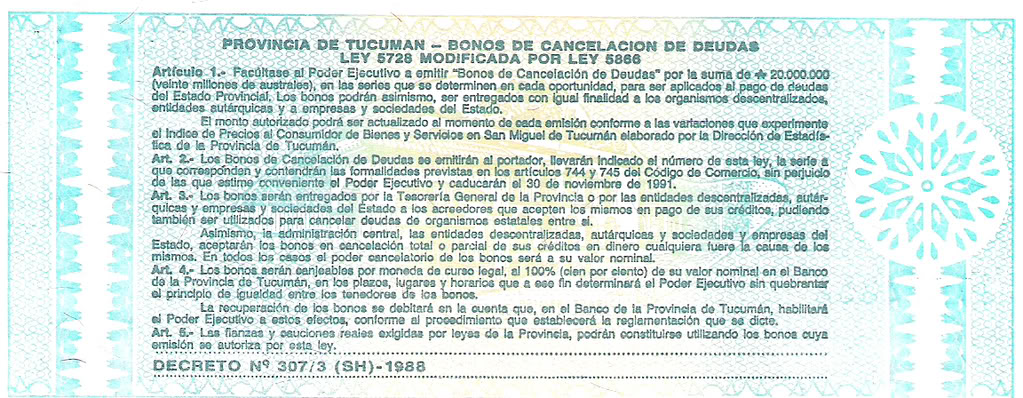ארגנטינה – Argentina
ארגנטינה 


The Argentine peso (Spanish: Peso argentino; symbol: $; code: ARS) is the currency of Argentina. It is subdivided into 100 centavos. Several earlier currencies of Argentina were also called "peso", and the first of such currencies, the peso fuerte and peso moneda corriente were introduced in 1826. From 1985 to 1991, the peso was replaced by the austral, but was then reintroduced in 1992 In 1826, two currencies denominated in pesos were introduced within Argentina. One, the peso fuerte (symbol: $ F; code: ARF) was a convertible currency, with 17 pesos equaling one Spanish ounce (27.0643 g) of 0.916 fine gold. It was subdivided into 100 centesimos. In 1864, this was changed to 16 pesos per gold ounce. It was replaced by the peso moneda. On November 5, 1881, silver 10, 20, and 50 centavo coins, and 1 peso coins were introduced, along with gold argentino coins. A year later, in 1882, bronze 1 and 2 centavo coins were introduced, followed by a gold ½ argentino coin in 1884. All the silver coins were demonetized in 1883. Every coin of this series depicted an image of Liberty on the obverse and the Argentine coat of arms on the reverse. . They were followed by a 50 cent cent coin in 1952. 1956 During the year, 5, 10, 20 and 50 centwa nickel-plated steel coins and 1 peso coin were minted. In 1958, 5 pesos were introduced, followed by 10 pesos in 1959, and 25 pesos in 1961. Commemorative coins were minted during the 1960s at values of 1, 10 and 25 pesos. The current peso was introduced in 1992, replacing the austral at a rate of 1 peso. In 1992, 1, 5, 10, 25, and 50 centavo coins were introduced, followed by 1 peso coins in 1994. The 1 centavo coin was last minted in 2001, and has since been removed from circulation. The composition of some of the coins changed as they continued circulating, such as the 10 centavo coin, which was initially aluminum-bronze, but was subsequently changed to brass-clad steel
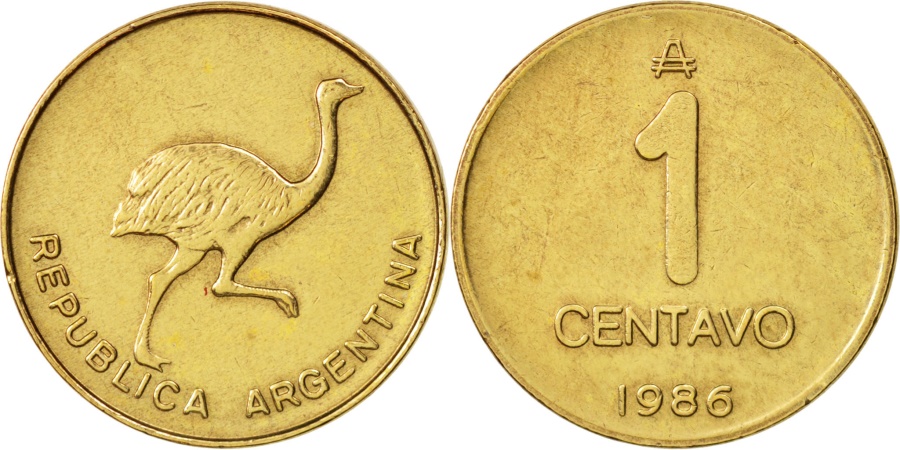








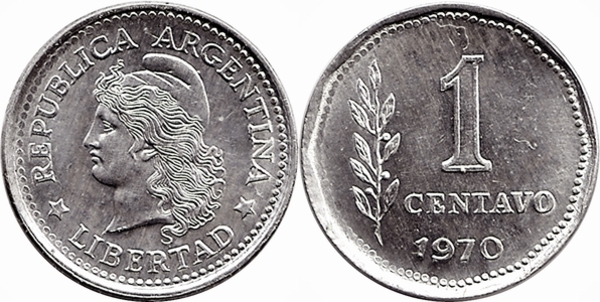




























































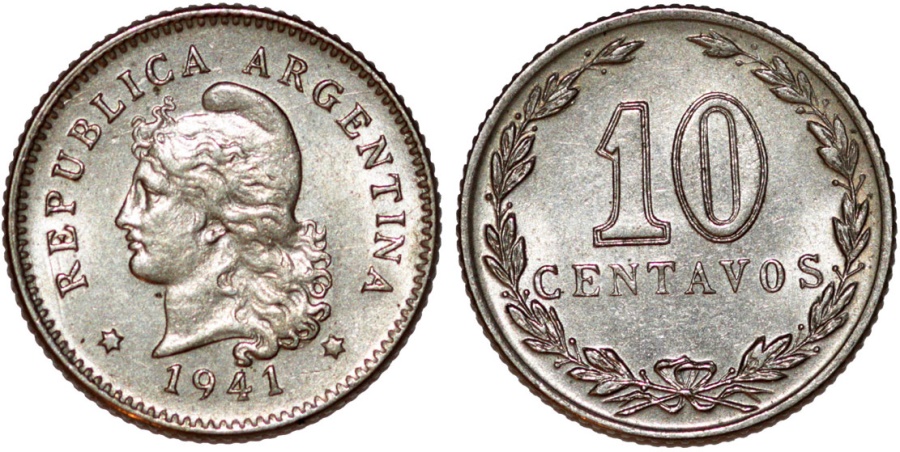
















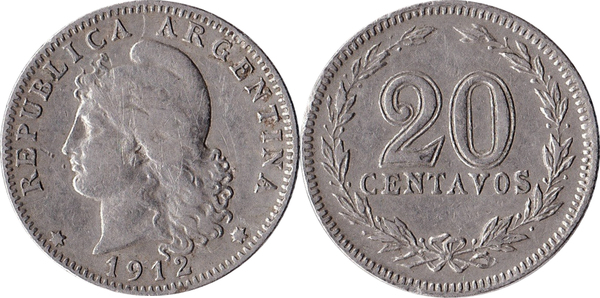

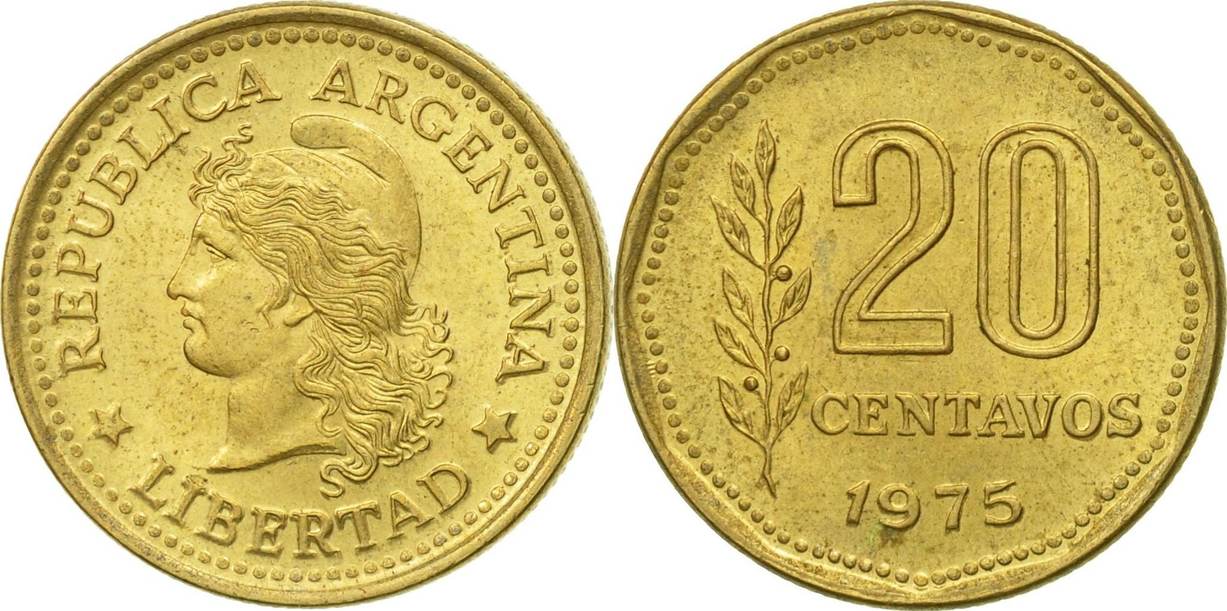








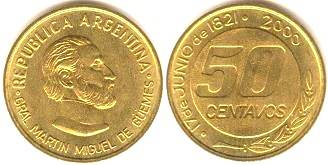







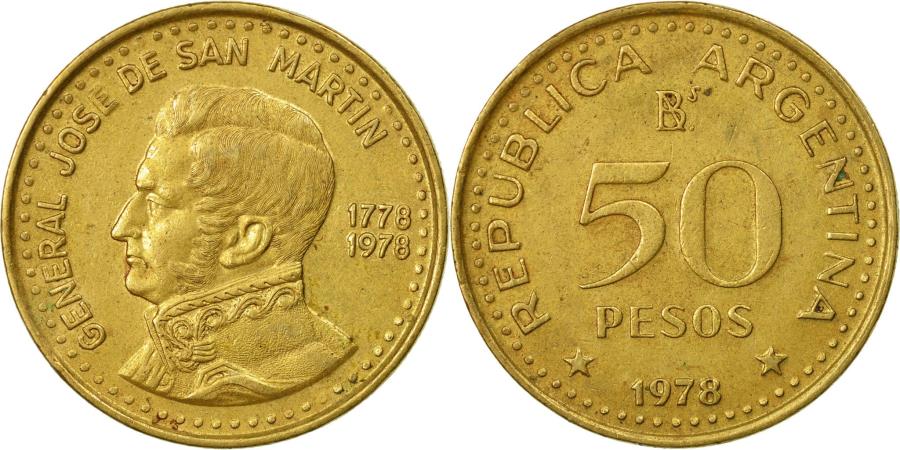


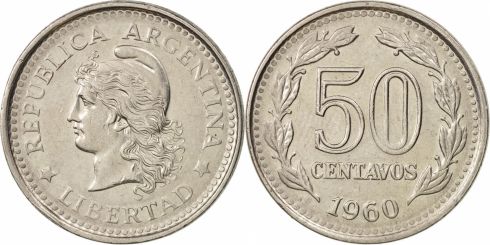
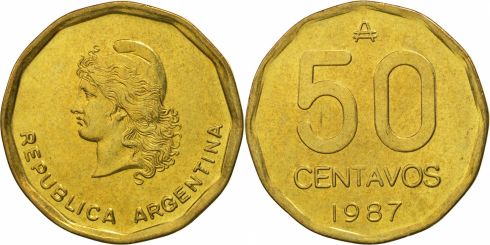
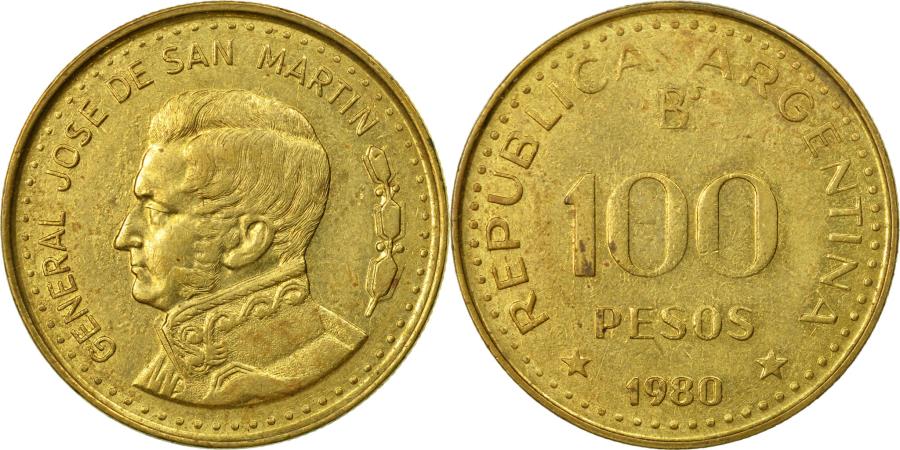




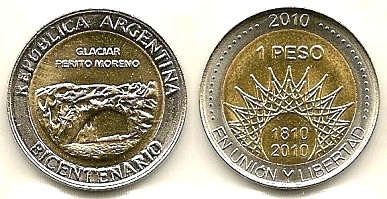













.jpg)




















_donatedfvt_f.jpg)
_donatedfvt_b.jpg)


_donatedjp_f.jpg)
_donatedjp_b.jpg)
_donatedsb_f.jpg)
_donatedsb_b.jpg)
_f.jpg)
_b.jpg)
_f.jpg)
_b.jpg)
_donatedcg_f.jpg)
_donatedcg_b.jpg)
_f.jpg)
_b.jpg)


_donatedfvt_f.jpg)
_donatedfvt_b.jpg)
_f.jpg)
_b.jpg)


_f.jpg)
_b.jpg)
_donatedorus_f.jpg)
_donatedorus_b.jpg)
_donatedmr_f.jpg)
_donatedmr_b.jpg)



.png)





